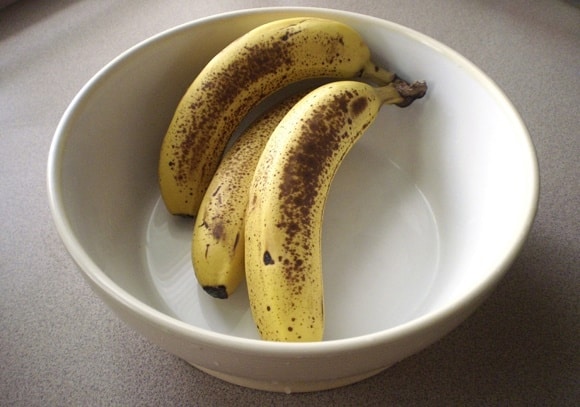This easy banana bread recipe makes a moist, delicious loaf of banana bread. A classic bread recipe!
The bananas sat in the bowl on the counter for over a week. I don’t like fresh bananas. My husband likes them. We were having house guests for the week, and I was sure THEY would like bananas. They were both health nuts, and health nuts like bananas, right? Wrong. One of them didn’t like bananas. The other had stomach issues and bananas apparently disagreed with her tummy. Those poor bananas turned brown, browner, black…
What do you do when you have three bananas w-a-y past their prime?
You bake banana bread, of course.
The following recipe is so easy, you can whip up a loaf of banana bread with just a few ingredients. You do need about an hour for the bread to bake, and another half hour to let it cool sufficiently. Otherwise cutting into the loaf turns it into a crumbly mess. Nevertheless, this is a great recipe for people who don’t normally bake.
Easy Banana Bread Recipe
Preheat the oven to 350 degrees F.
Grease a glass loaf pan with shortening.
You will need:
- 3 very ripe, smushy bananas
- 2 cups of white flour
- 3/4 cup of sugar
- 2 eggs
- 1 teaspoon of baking soda
- 1 teaspoon of salt
In a large bowl, peel the bananas and mash them up with a fork. Stir in the eggs by hand, then when the liquids are mixed, stir in the sugar, flour, soda and salt. Stir until everything is mixed, then pour into the greased loaf pan and bake for one hour or until a toothpick inserted into the center comes out clean. Let it cool about half an hour before removing it to a plate to cool completely.





